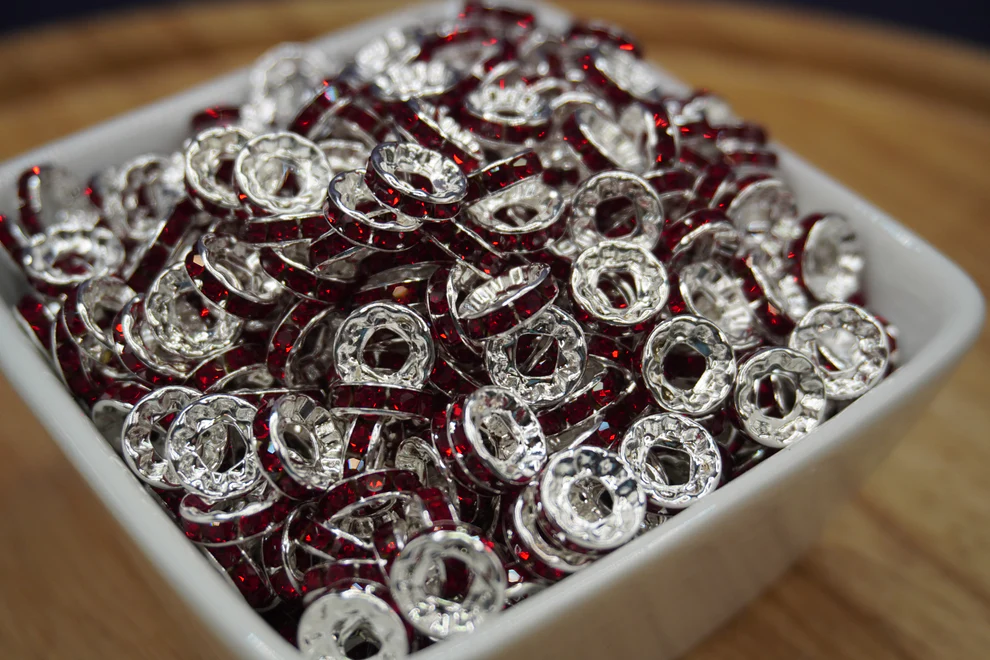
Food-grade silicone key chain with layered structure design
The layered structure design of food-grade silicone key chains needs to combine the material properties and functional requirements, and achieve a balance between safety, practicality and aesthetics through modular combination. The following analysis is conducted from three dimensions: material properties, structural layering, and functional integration
First, material properties and structural compatibility
Food-grade silica gel takes silicon dioxide (SiO₂·nH₂O) as its core component, with a content exceeding 98%. Its highly active microporous structure (pore size 8-10nm) endows the material with a high specific surface area and adsorption capacity. This material forms a three-dimensional cross-linked network through the platinum vulcanization process, featuring high transparency, tear resistance (tear strength higher than that of ordinary rubber), and heat resistance (-40℃ to 200℃). Its chemical inertness ensures that it does not react with acids, bases or salts, and there is no risk of plasticizer or heavy metal leaching, meeting the EU ROHS certification standards. This feature enables the key chain to come into direct contact with the skin or food-grade environment, while meeting the durability requirements of not yellowing or cracking over long-term use.
Second, the hierarchical structure design logic
Core functional layer
The main frame of the key chain is formed by injection molding with high-density silicone rubber substrate (Shore hardness 30-50A). The thickness of this layer is recommended to be controlled at 2-3mm to balance flexibility and impact resistance. Its surface can be designed with slightly concave and convex textures to enhance the anti-slip performance.
Elastic buffer layer
A 0.5-1mm thick silicone buffer layer is nested within the main frame to absorb the impact force by taking advantage of the flexibility of silicone. This layer can form a closed-cell structure through foaming process, further enhancing the shock absorption effect while maintaining the overall lightness of the material (with a density of approximately 1.2g/cm³).
Functional addition layer
Antibacterial coating: Spray silver ion antibacterial agent on the contact surface of the key to inhibit bacterial growth. After testing, the antibacterial rate can reach 99.9%.
Luminous layer: Incorporating strontium aluminate luminous powder, it can continuously emit light for 8 hours after absorbing light, enhancing visibility at night.
Magnetic attraction module: Embedded with neodymium iron boron magnets, it achieves the adsorption and fixation of the key to the metal surface. The magnetic force strength needs to be controlled within 0.5-1N to avoid the risk of loss.
Decorative layer
By using a two-color injection molding process, transparent silicone rubber is combined with colored silicone rubber to form a gradient or pattern effect. It can also be embedded with liquid epoxy resin made from food-grade color masterbatches and formed into three-dimensional decoration through UV curing to enhance visual appeal.
Third, functional integration and process optimization
Integrated molding
Through liquid silicone rubber injection molding technology, multi-layer structures can be formed in one step, reducing the risk of seams. The mold temperature should be controlled at 160-180℃, and the vulcanization time should be 10-15 minutes to ensure uniform crosslinking density.
Demolding and post-processing
Pre-apply mold release agent on the surface of the key model to prevent the silicone from sticking. After molding, ultrasonic cleaning is used to remove burrs, and then it is dried in a 200℃ hot air circulation to eliminate internal stress.
Security verification
According to GB 4806.11-2016 “National Food Safety Standard – Rubber Materials and Products for Food Contact”, the total migration amount (≤10mg/dm²), potassium permanganate consumption (≤10mg/kg), and heavy metals (calculated as Pb, ≤1mg/kg) need to be tested to ensure compliance with food contact safety.
Fourth, innovation direction
Intelligent response layer: Embedded with temperature-sensitive silicone microcapsules, it presents a color gradient with temperature changes, indicating the ambient temperature.
Self-healing coating: Microencapsulated repair agent is added. After scraping and heating, it can locally repair surface scratches.
Modular interface: The design features a snap-on interface, supporting the replacement of decorative layers or additional functional modules (such as UV sterilization lamps, Bluetooth trackers).
This layered design, through material science, process optimization and functional innovation, enables food-grade silicone key chains to achieve multi-dimensional upgrades from basic functions to intelligent interaction while meeting safety standards. It takes into account both practicality and fun, meeting the dual demands of modern consumers for personalization and functionality.





Leave a reply